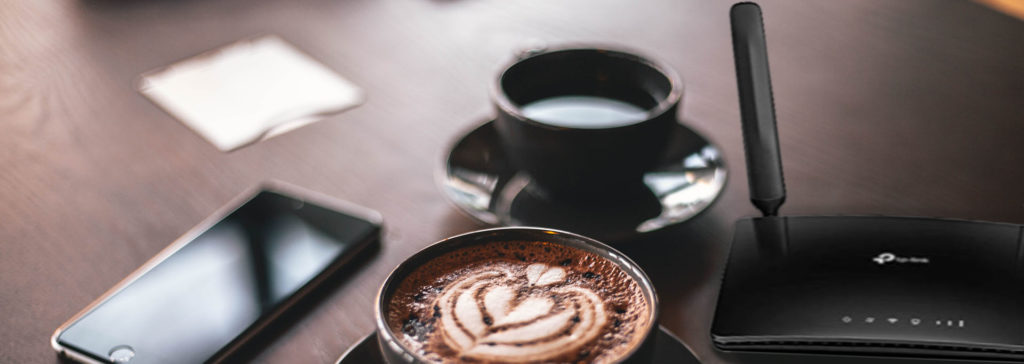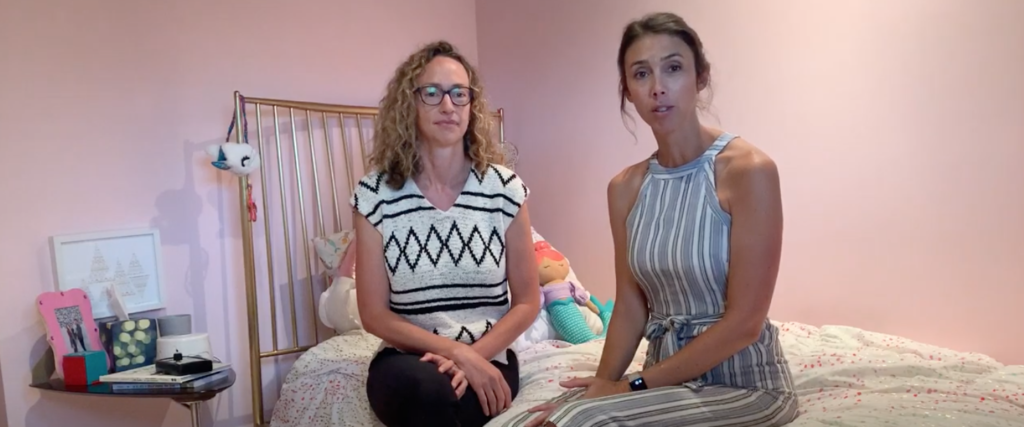Creating a Safe Sleep Space: Routers
Alyssa Veneklase talks with Lisa Tiedt, Building Biologist and owner of Well Abode, about creating health sanctuaries in our homes. You can watch this video on YouTube.
Alyssa: Hi. It’s Alyssa and Lisa here again. This is Part 3 of our series on how to create a low EMF sleep space, and we’ve kind of narrowed it down to three main culprits, which are sound machines, monitors, and then routers?
Lisa: Yeah. The router that you have in your house.
Alyssa: Even though routers aren’t usually in bedrooms, we’re still going to talk about them today. We put one across the hall, so it might be very close to a bedroom, and we can kind of see how that affects the sleep space. So do you want to tell everyone again just briefly what a Building Biologist is in case they didn’t watch the other two videos?
Lisa: Yes. A Building Biologist is a person that assesses any built environment. It could be a home or an office or a school for anything that directly impacts the health of the people that work, sleep, or live within those spaces. And we look at air quality — that’s a very broad topic, but air quality, creating a low EMF environment, as well as water quality, too. Of all the homes that I have assessed, the three top culprits are just the ones that we’ve talked about today: the sound machines, the baby monitors, and the routers that are typically in a room that shares a wall or is in close proximity to a sleep space.
Alyssa: So do we want to measure this room with no router and then kind of see how things change as we get close to the router?
Lisa: Yes. So we’re in Alyssa’s daughter’s room.
Alyssa: This is my daughter’s room, and there’s no router in here and we actually don’t have one in this part of the house, but we plugged one in across the hall just for this video. But a lot of people will have an office maybe across the hall or maybe the bedroom is near the living room where it’s plugged in.
Lisa: Or it could the bedroom’s on the second floor, and the router could be in the basement right underneath.
Alyssa: So it could be going up and down this way?
Lisa: Yep. The three materials that actually stop radiofrequency radiation are metal, steel, and brick. But it passes directly through building materials such as windows, drywall, plywood, wood, things of that nature. So even having a router in close proximity spills over into all those other spaces. And, again, the sleep space is the most important, and we’re here today to create a sleep sanctuary.
Alyssa: All right. Should we look at the numbers?
Lisa: Again, we’re looking at radiofrequency radiation. We are looking primarily at the middle number here, and it says 3,680 microwatts per meter squared.
Alyssa: What’s our ideal?
Lisa: An ideal for RF is 10µw.m², so you want to be in the double digits. So we’re at 3,810µw.m², and we want to get to 10. So we’re going to go across the hall where the router is on. You can see that the numbers, as we get closer to the router, are beginning to increase. And so obviously, distance to source matters, but as we get close to —
Alyssa: Oh, so now we’re up to 188,000µw.m²?
Lisa: So we’re now up to 188,000µw.m². We get closer and closer. We’re at —
Alyssa: Over a million µw.m²!
Lisa: Over a million! And if you look at the router here, there are two numbers. There’s 2.4 gigahertz (GHz) and then there’s 5 gigahertz (GHz). So both of these frequencies are active in a router that you get, just any router. It’s automatically turned on by the manufacturer.
Alyssa: And that’s the 5G that is faster?
Lisa: Yep. And so now, you know, we’re up to 1.5 millionµw.m² of radiation. So one thing that you can do — obviously, distance from source matters, so in your daughter’s bedroom, we started at 3,600µw.m². We’re now at 1.5 millionµw.m². So it’s really good that your daughter doesn’t have any router in her bedroom. There are different shielding options. This happens to be a fabric one. You can get a metal one like we showed you with the baby monitors that’s just in the shape of a rectangle instead of a cylinder. And so you can see now that this has taken it down to around 10,000µw.m² — A router shield will reduce EMF’s from WiFi by ~85% to 90% 24/7.
Or upgrade to the JRS Eco Wireless routers reduce radiation pulses by 90%. The JRS Eco 100 models even take it one step further and automatically switch to a completely radiation-free Full Eco stand-by mode when no wifi devices are connected and automatically detect only your paired devices.
Alyssa: So it went from 1.5 million µw.m², almost, to about 10,000 µw.m².
Lisa: So that’s exponential reduction. We still — again, we want to be in single digits. We want to get to 10 so even this is kind of too high for a safe sleep space. And so one of the really cool things that you can do is get this particular router which has a manual on/off button bur turning off at night.
Alyssa: So most routers don’t have an on/off button? You would have to completely unplug it?
Lisa: Most routers, you’d have to pull the cord out of the wall. The other kind of ingenious thing that you get is — this company actually sells remote outlet switches. They come in sets of one, three, and five. And what this allows you to do is plug this switch into a wall and then you plug the router into the switch, and with the remote outlet switch at your bedside table — and you can see here. You can actually turn the router off and on. So now — and this is kind of still shutting down, but now it went from 1.4 million µw.m² to around 10,000 to 1 million µw.m². Now, this is still picking up — I think probably your smart watch, but essentially, it’s going down and down. And then the other thing even better that you can get so that you don’t have radiation coming from your router all the time is to actually hardwire. The best option is to manually turn off WiFi and Bluetooth on every device and use hardwired grounded & shielded Ethernet cables to get Internet connectivity. This eliminates EMF’s from WiFi with your devices.
Alyssa: Okay. So keep your router as far away from your bedroom as possible?
Lisa: Yes, and turn it off when you sleep.
Alyssa: And turn it off when you’re not using it, especially during sleep.
Lisa: Yep.
Alyssa: All right. Thanks!
Lisa: Thank you!
Research
To learn more about the health impacts of man-made electromagnetic fields (EMFs), check out the BioInitiative Report. It has a 19 page Summary for the Public & Charts which is the preeminent summary. The full 1,500-page report authored by an international panel of M.D. and Ph. D. scientists and physicians, analyzes +3,800 scientific, peer reviewed studies showing adverse health hazards of electromagnetic radiation, especially with children. Diseases and disorders include cancer, neurological diseases, respiratory diseases, behavioral disorders i.e. ADD and autism, immune dysfunction, Blood-Brain Barrier permeability, reproductive failure & birth defects, chronic fatigue, insomnia, depression, headaches, muscle/joint pain, chronic inflammation and many more.
Creating a Safe Sleep Space: Routers Read More »




